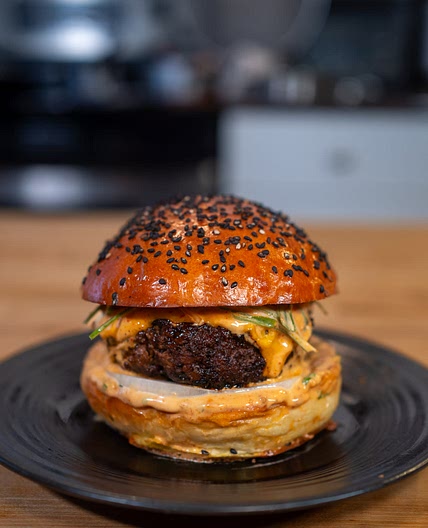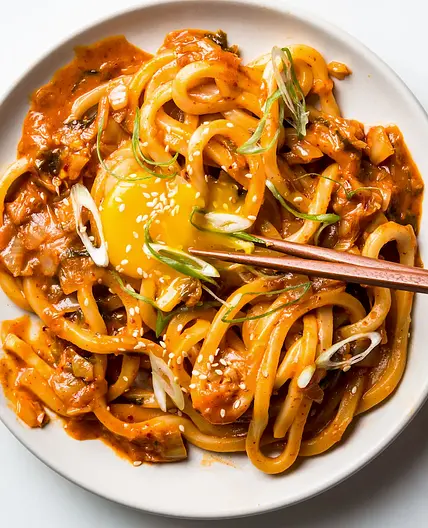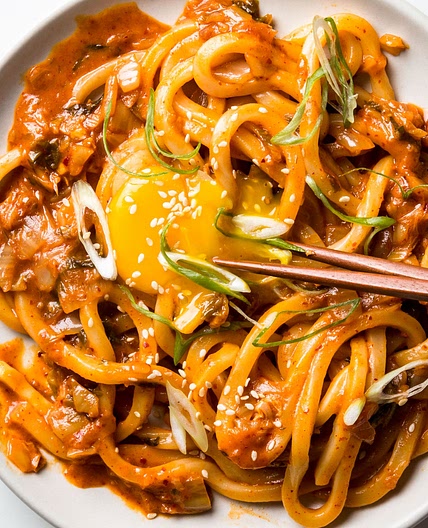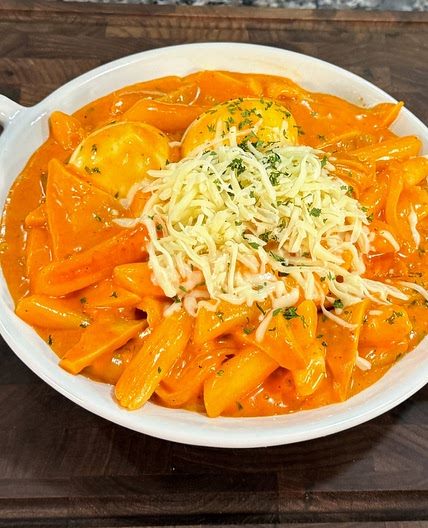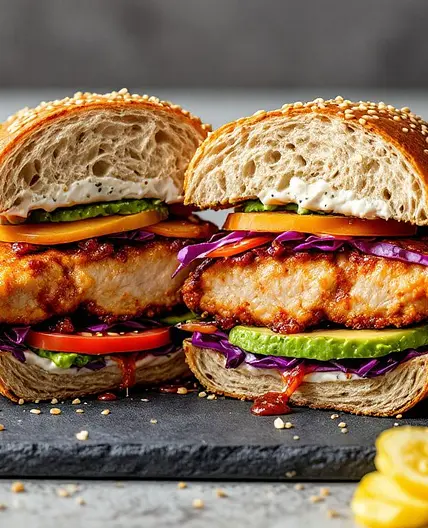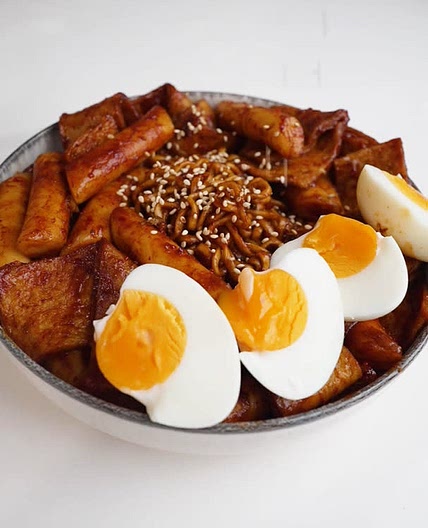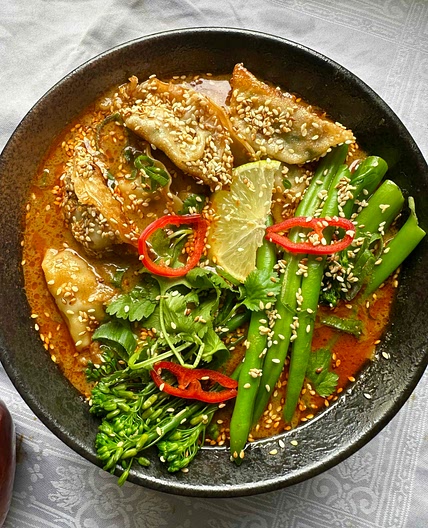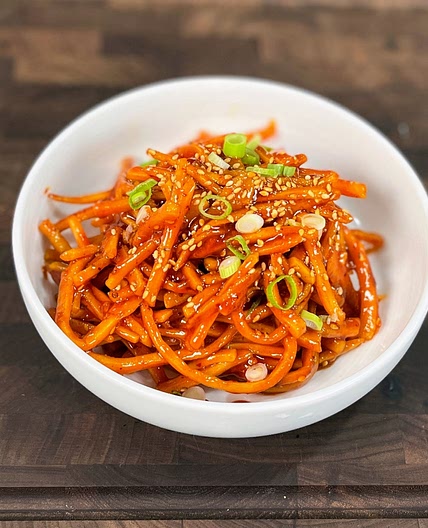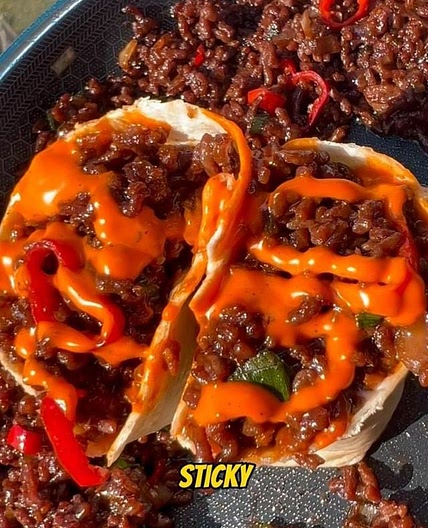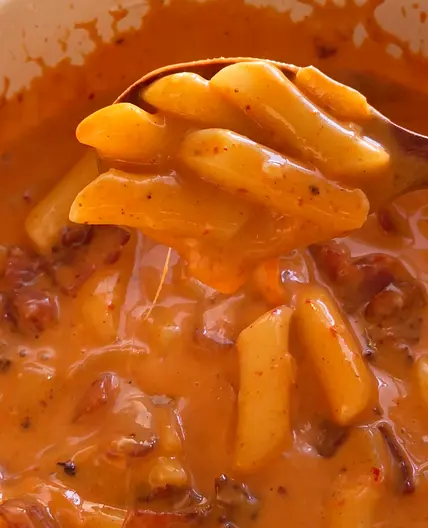By Samsung Food
Vegetarian Bibimbap
8 steps
Prep:30minCook:25min
This vegetarian Bibimbap is simple and deeply satisfying. Crisp vegetables and bold, plant-based sauces come together over a bed of warm, fluffy rice.
Updated at: Thu, 10 Apr 2025 08:33:02 GMT
Nutrition balance score
Uh-oh! We're unable to calculate nutrition for this recipe because some ingredients aren't recognized.
Ingredients
2 servings
For the base:
1 cupshort-grain white rice
uncooked, or brown
1 ¼ cupswater
for white rice, or 1 1/2 cups, for brown rice
salt
optional
Toppings:
1 cupspinach
blanched and seasoned with a pinch of salt and
sesame oil
1 cupbean sprouts
blanched and lightly seasoned
½ cupcarrots
julienned, lightly sautéed or raw
½ cupjulienned cucumber
½ cupshiitake mushrooms
or oyster, sautéed in sesame oil and soy sauce
2 tablespoonsgochujang sauce
vegetarian, per serving
¼ cupkimchi
fish-free
2egg
fried, optional - skip or use tofu for a vegan version
Toasted sesame seeds
scallions
chopped, for garnish
For the vegan gochujang sauce:
2 Tbspchili flakes
Korean, gochugaru
1 Tbspmiso paste
adds umami without fish
1 Tbspmaple syrup
or brown rice syrup
2 tspsoy sauce
or tamari
1 tsprice vinegar
1 tsptoasted sesame oil
1 Tbspwater
to thin as needed
For the vegan kimchi:
Instructions
Cook the rice
Step 1
Rinse 1 cup of short-grain white or brown rice under cold water until the water runs mostly clear. Combine with water (1¼ cups for white rice, 1½ cups for brown) in a small pot and bring to a boil. Reduce to a simmer, cover, and cook—15–18 minutes for white rice, 35–40 for brown. Let rest, covered, for 5–10 minutes. Start this step first, so the rice is ready by the time the toppings are prepped.
Make the gochujang sauce
Step 2
In a small bowl, mix 2 tablespoons gochugaru (Korean chili flakes), 1 tablespoon white miso paste, 1 tablespoon maple syrup, 2 teaspoons soy sauce, 1 teaspoon rice vinegar, 1 teaspoon sesame oil, and 1–2 tablespoons water until smooth.
Prepare the quick vegan kimchi
Step 3
Toss chopped Napa cabbage with salt and let sit for 30 minutes. Rinse and drain well. Meanwhile, mix grated carrot, garlic, ginger, miso, soy sauce, gochugaru, sugar, and a splash of water into a paste. Combine with the cabbage and let sit while you prep the rest of the dish.
Prep the vegetables
Step 4
Julienne the carrots and cucumber. Lightly sauté the carrots if desired. Slice and sauté mushrooms with soy sauce and sesame oil until golden.
Step 5
Blanch the spinach and bean sprouts separately, then season lightly with salt and sesame oil. To blanch vegetables like spinach or bean sprouts, bring a pot of water to a boil and prepare a bowl of ice water on the side. Add the spinach and cook for 30 to 60 seconds, just until wilted and bright green, then immediately transfer it to the ice water to stop the cooking. For bean sprouts, cook them in the boiling water for 1 to 2 minutes until just tender, then move them to the ice water as well. Once cooled, drain both vegetables thoroughly—gently squeezing the spinach to remove excess water—and season each with a pinch of salt and a few drops of sesame oil.
Fry the egg or tofu (optional)
Step 6
Fry an egg sunny side up, or sear slices of tofu until golden on both sides.
Assemble your Bibimbap
Step 7
Spoon the warm rice into two bowls. Arrange vegetables and kimchi on top. Add the egg or tofu. Drizzle with gochujang sauce and sprinkle with sesame seeds and scallions.
Mix and enjoy
Step 8
Stir everything together just before eating so every bite gets a little of everything.
Notes
0 liked
0 disliked
There are no notes yet. Be the first to share your experience!

